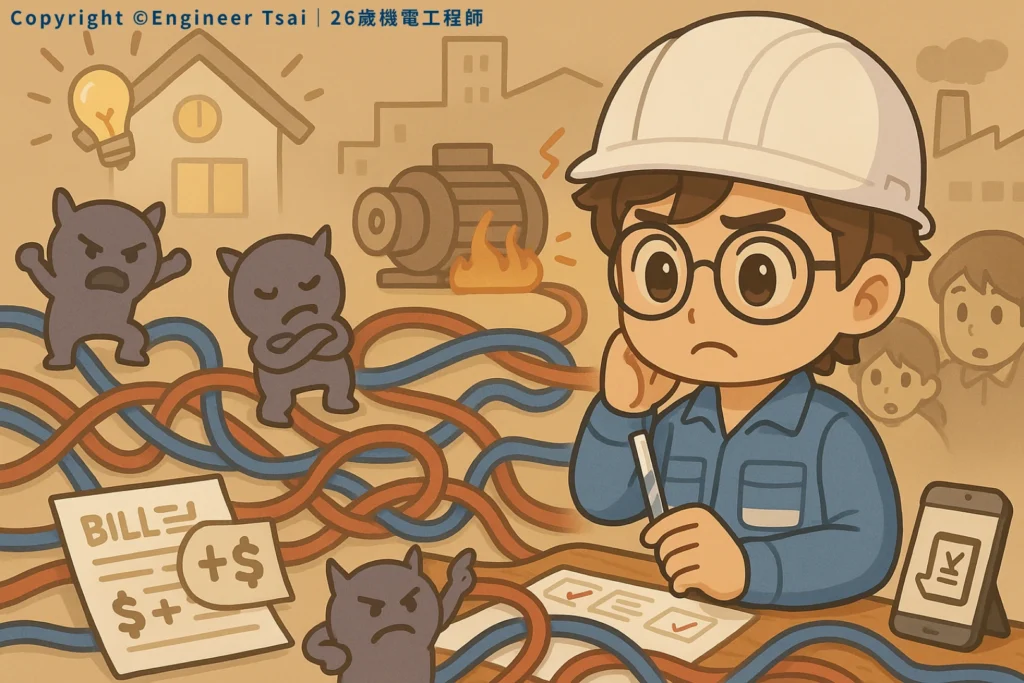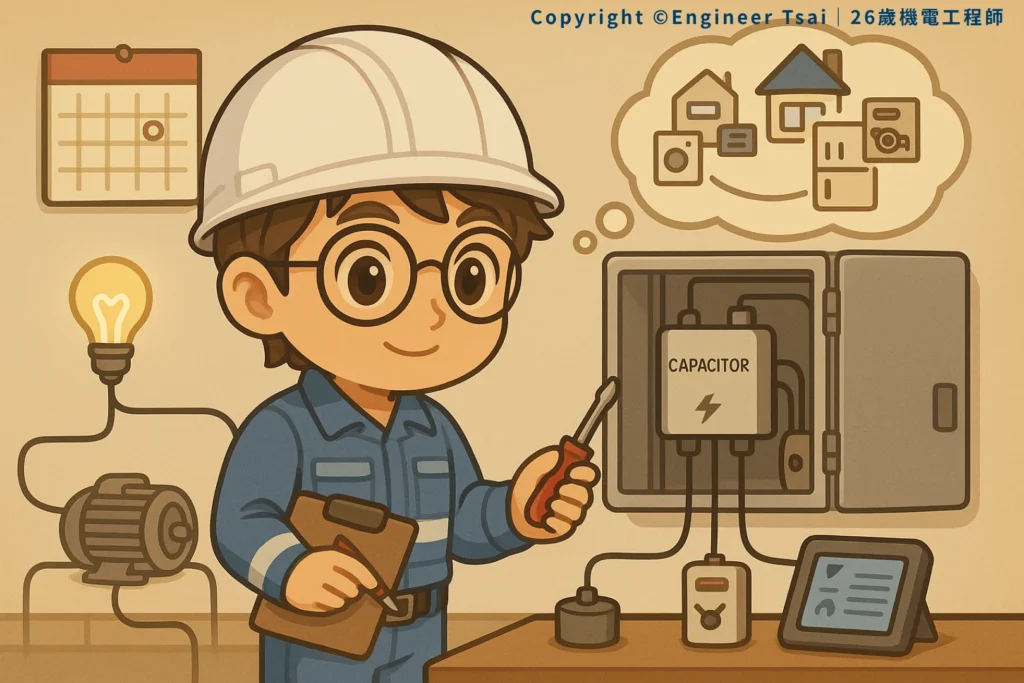▶️ 立即觀看:交流變直流有多難?整流器一次看懂!
你知道嗎?手機、筆電、各種電子設備,其實都吃「直流電」。
但插座送來的卻是交流電——這中間, 整流器 扮演了關鍵角色!
Ever got hit with a surprise fee on your electric bill, even though you didn’t use more electricity?
Or maybe the power company flagged your equipment for being inefficient?
Yup—that might be because of power factor.
Sounds technical, right?
But this one little number could be the reason your motors run hot, your lights flicker, or your utility bill is higher than it should be.
In this post, we’ll break it all down—simple, straight, and practical. You’ll finally understand what power factor really means, and why it matters in your daily life.
Chapter 1: What the Heck Is Power Factor?
Let’s break it down with a milkshake analogy.
Imagine you’re sipping on a bubble tea.
- The pearls are the useful stuff (the power that actually does work).
- The ice and air bubbles? Just taking up space (wasted power).
Power factor tells you how much of the electricity you’re using is actually going to good use.
It’s the ratio of real power (doing the work) to apparent power (the total being delivered).
Power Factor = Real Power ÷ Total Power
- A perfect score is 1.0 — every drop of electricity is useful.
- Below 0.9? That’s a red flag—lots of waste going on.
💡 Think of power factor as your “energy efficiency grade” for electricity.

Chapter 2: Why Does a Low Power Factor Suck?
Short answer?
It wastes resources and causes all kinds of headaches.
Here’s how:
- Bigger wires needed: Because you’re pulling more current than needed, wiring has to be thicker. That means higher costs.
- Extra charges on your bill: Commercial and industrial customers often get hit with “low power factor penalties” from utility companies.
- Equipment stress: Motors can overheat. Voltage can drop. Things break faster.
It’s like hiring 10 movers to carry boxes, but only 3 are doing the work.
The rest? Just standing around, blocking the hallway—and still getting paid.
Chapter 3: Who Gets Hit the Hardest?
You might think this only affects factories. Nope.
These signs might feel familiar:
- Your AC or fridge causes the lights to dim or flicker.
- Every time heavy equipment starts, your breaker trips or the lights blink.
- Your building got a new elevator, and now your gadgets act weird.
The common culprit? Inductive loads—equipment that stores energy in magnetic fields.
Common offenders include:
- Motors and compressors
- Transformers
- Water pumps and HVAC systems
- Large LED lighting arrays

Chapter 4: How to Fix a Bad Power Factor
If you’re just a homeowner? Don’t stress too much.
But if you manage a shop, run a factory, or work in field service—you definitely want to pay attention.
Here are a few proven fixes:
1. Install Power Factor Correction Capacitors
These little guys “fill in” the missing efficiency, kind of like giving your energy system a tune-up.
2. Use VFDs (Variable Frequency Drives)
They don’t just save power—they help motors start smoother and improve power factor along the way.
3. Spread Out Heavy Loads
Don’t schedule all high-load equipment to run at the same time. Staggering their usage helps keep your power factor in check.

Final Thoughts: Power Factor = Smart Energy Habits
Energy efficiency isn’t just about using less—it’s about using it smarter.
Power factor is a way to measure how well your system does that.
So next time you see “power factor” on an invoice, a spec sheet, or a utility report—don’t tune it out.
It’s more than just a nerdy number.
It’s a signal about how efficiently your whole setup is running.
💭 Want to make your systems last longer and lower your electric bill? Start by asking: “How’s my power factor doing?”
📌 Related Reads
🔹 How Do Electric Motor Work? DC, AC, and Brushless Motors Simplified
Understand the machines behind most power factor issues—and how to optimize them.
🔹 Practical Guide to Inductance in AC Circuits: Design, Reactance, and Efficiency
Learn why certain loads throw your system out of sync and how to deal with them.
🔹 Save Energy, Extend Motor Life: Why VFDs Are a Game-Changer
Variable frequency drives are power factor’s best friend. Here’s why.
Got any war stories from the field?
Ever had a motor blow because of poor power factor? Or managed to fix it and save big on your bill?
Drop a comment and let’s share some smart energy hacks.


